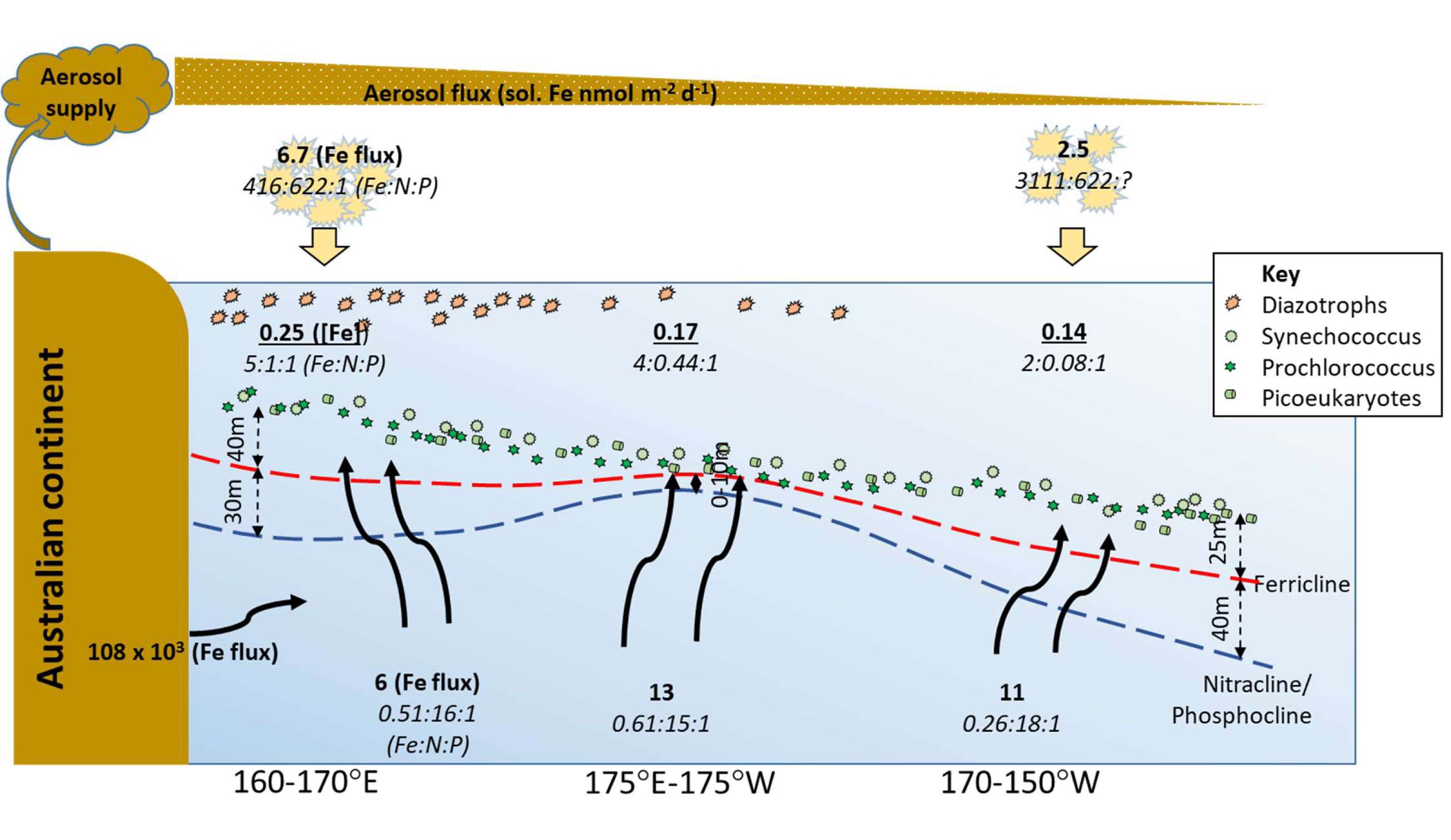Surface South Pacific ecosystems reflect the availability of the nutrients iron, nitrate and phosphate
Thanks to a high resolution section across the South Pacific (150°E-150°W, GEOTRACES GP13 cruise), Ellwood and co-workers (2018, see reference below) identify that the gradient of sources and fates of the 3 nutrients iron (Fe), nitrogen (N) and phosphorus (P) is explaining the observed ecosystem west-east gradient. In the west, phytoplankton able to fix atmospheric nitrogen (diazotroph species) is abundant while it is the opposite in the eastern end of the section. As shown in the figure, such drop of the diazotroph species is due to the low abundance of Fe in the most remote part of the section.

Figure: Cartoon showing the input fluxes for iron (Fe), nitrogen (N) and phosphorus (P) into surface ocean across the GP13 zonal section. In the west, diazotrophs are abundant while it is the opposite in the eastern end of the section due to the low abundance of Fe, in the most remote part of the section. Click here to view the figure larger.
Reference:
Ellwood, M. J., Bowie, A. R., Baker, A., Gault-Ringold, M., Hassler, C., Law, C. S., Maher, W. A., Marriner, A., Nodder, S., Sander, S., Stevens, C., Townsend, A., van der Merwe, P., Woodward, E. M. S., Wuttig, K., Boyd, P. W. (2018). Insights Into the Biogeochemical Cycling of Iron, Nitrate, and Phosphate Across a 5,300 km South Pacific Zonal Section (153°E-150°W). Global Biogeochemical Cycles, 32(2), 187–207. http://doi.org/10.1002/2017GB005736
